Research on the Vortex Rope Control Techniques in Draft Tube of Francis Turbines
Abstract
:1. Introduction
2. Generation Mechanism and Harm of Draft Tube Vortex Rope
2.1. Generation Mechanism
2.2. Harm
- (1)
- Efficiency
- (2)
- Pressure fluctuation
- (3)
- Cavitation erosion
3. Status of Domestic and International Research
4. The Method to Suppress Vortex Rope Inside Stern Pipe
4.1. Passive Flow Control
4.1.1. Structure Optimization of Draft Tube
4.1.2. Structure Optimization of Runner Cone
4.1.3. Guide Vane Opening
4.2. Active Flow Control
4.2.1. Replenish Air
4.2.2. Water Injection
5. Conclusions
- (1)
- Under partial load conditions, the spiral belt in the draft tube revolves around the dead water area, which hinders the recovery of kinetic energy and leads to a decrease in the efficiency of the unit. Under the influence of periodic non-equilibrium factors, the volute strikes the wall of the draft tube, causing pressure pulsation in the draft tube and the unit to vibrate, which may lead to an accident in the turbine unit. The huge negative pressure generated by the worm belt forms cavitation, aggravates the axial vibration of the turbine, causes wall wear and damage, and even leads to serious consequences such as weld cracking.
- (2)
- Passive flow control often passively controls the flow field velocity and pressure distribution in the draft tube by changing the geometry of the main flow components of the turbine. Adding fins to the draft tube inlet cone can effectively inhibit the growth of the cavitation vortex and reduce the volume of the cavitation. The baffle of the inlet cone reduces the peripheral velocity entering the draft tube, making the flow more stable. Increasing the diffusion angle of the draft tube or setting up isolation piers can effectively suppress the development of the vortex and the amplitude of the pressure pulsation. The extended drain cone compresses the development space of the vortex in the draft tube, thereby reducing the vortex strength of the vortex. Designing a groove structure or adding fins on the drain cone can reduce the eccentricity of the vortex rope, and the pressure pulsation amplitude can be significantly reduced. The holes and slots on the drain cone and the opening of the guide vane can all play a role in eddy suppression and vibration reduction to a certain extent.
- (3)
- Active flow control can actively change the velocity and pressure distribution of the flow field inside the turbine draft tube by injecting media into the turbine flow field. Commonly used media are air and water. Air supplementation can effectively suppress high-frequency noise and pressure pulsation, as well as the generation of vortex ropes and cavitation. Nevertheless, under partial load conditions, the amount of supplemental air is an important factor for vortex suppression. Only when the amount of supplemental air reaches a certain value can a better effect be achieved. When the amount of supplemental gas is excessive, it worsens the performance of the turbine. The optimal amount of supplemental gas is usually about 2% of the liquid flow rate. Water injection is mainly divided into tangential replenishment and axial replenishment. Water injection can effectively reduce the volume and pressure amplitude of the vortex. However, with the increase in the amount of water injection, the efficiency of the turbine decreases monotonically. Compared with the air supply method, the water supply is relatively poor for the improvement of the vortex rope and the optimization of the operation efficiency of the turbine.
Author Contributions
Funding
Data Availability Statement
Conflicts of Interest
References
- Capik, M.; Yılmaz, A.O.; Cavusoglu, I. Hydropower for sustainable energy development in Turkey: The small hydropower case of the Eastern Black Sea Region. Renew. Sustain. Energy Rev. 2012, 16, 6160–6172. [Google Scholar] [CrossRef]
- Blair, T. Energy Production Systems Engineering; IEEE Press: Piscataway, NJ, USA, 2016. [Google Scholar]
- Mei, Z.Y. Mechanical Design and Manufacture of Hydraulic Machinery; Routledge: New York, NY, USA, 2018. [Google Scholar]
- Xu, Y.; Qin, D.; Zhao, Y.; Wang, H. Exploratory analysis on pressure fluctuation conversion in Francis turbine draft tubes. J. Hydroelectr. Eng. 2016, 01, 87–94. (In Chinese) [Google Scholar]
- Zhou, P.; Dai, J.; Yan, C.; Zheng, S.; Ye, C.; Zhang, X. Effect of Stall Cells on Pressure Fluctuations Characteristics in a Centrifugal Pump. Symmetry 2019, 11, 1116. [Google Scholar] [CrossRef] [Green Version]
- Liu, X.; Luo, Y.; Wang, Z. A review on fatigue damage mechanism in hydro turbines. Renew. Sustain. Energy Rev. 2016, 54, 1–14. [Google Scholar] [CrossRef]
- Zuo, Z.; Liu, S.; De-Min, L.; Da-Qing, Q. Numeical analyses of pressure fluctuations induced by interblade vortex in a model Francis turbine. J. Hydrodyn. Ser. B 2015, 27, 513–521. [Google Scholar] [CrossRef]
- Paik, J.; Sotiropoulos, F.; Sale, M.J. Numerical simulation of swirling flow in complex hydro turbine draft tube using unsteady statistical turbulence models. J. Hydraul. Eng. 2005, 131, 441–456. [Google Scholar] [CrossRef]
- Sandeep, K.; Cervantes Michel, J.; Gandhi Bhupendra, K. Rotating vortex rope formation and mitigation in draft tube of hydro turbines—A review from experimental perspective. Renew. Sustain. Energy Rev. 2021, 136. [Google Scholar]
- Goyal, R.; Cervantes, M.J.; Gandhi, B.K. Vortex rope formation in a high head model Francis turbine. J. Fluids Eng. 2017, 139. [Google Scholar] [CrossRef]
- Ruprecht, A.; Helmrich, T.; Aschenbrenner, T.; Scherer, T. Simulation of vortex rope in a turbine draft tube. In Proceedings of the 21st IAHR Symposium on Hydraulic Machinery and Systems. EPFL/STI/LMH, Lausanne, Switzerland, 9–12 September 2002; Volume 1, pp. 259–266. [Google Scholar]
- Hellström, J.; Marjavaara, B.; Lundström, T. Parallel CFD simulations of an original and redesigned hydraulic turbine draft tube. Adv. Eng. Softw. 2007, 38, 338–344. [Google Scholar] [CrossRef]
- Zuo, Z.; Liu, S.; Sun, Y.; Wu, Y. Pressure fluctuations in the vaneless space of High-head pump-turbines—A review. Renew. Sustain. Energy Rev. 2015, 41, 965–974. [Google Scholar] [CrossRef]
- Yamamoto, K. Hydrodynamics of Francis Turbine Operation at Deep Part Load Condition; EPFL: Vaud, Switzerland, 2017. [Google Scholar]
- Subodh, K.; Singh Krishna, M.; Cervantes Michel, J.; Gandhi Bhupendra, K. Numerical analysis of water jet injection in the draft tube of a Francis turbine at part load operations. J. Fluids Eng. 2022, 144. [Google Scholar]
- Iliescu, M.S.; Ciocan, G.D.; Avellan, F. Analysis of the cavitating draft tube vortex in a Francis turbine using particle image velocimetry measurements in two-phase flow. J. Fluids Eng. 2008, 130. [Google Scholar] [CrossRef]
- Qian, Z.; Yang, J.-D.; Huai, W.-X. Numerical Simulation and Analysis of Pressure Pulsation in Francis Hydraulic Turbine with Air Admission. J. Hydrodyn. 2007, 19, 467–472. [Google Scholar] [CrossRef]
- Pasche, S. Dynamics and Optimal Control of Self-Sustained Instabilities in Laminar and Turbulent Swirling Flows: Application to the Part Load Vortex Rope in Francis Turbines; EPFL: Vaud, Switzerland, 2018. [Google Scholar]
- Laouari, A.; Ghenaiet, A. Investigation of steady and unsteady cavitating flows through a small Francis turbine. Renew. Energy 2021, 172, 841–861. [Google Scholar] [CrossRef]
- Yan, X. Study on Instability and Improvement Strategy of Draft Vortex of Mixed Flow Turbine; Harbin Institute of Technology: Harbin, China, 2019. (In Chinese) [Google Scholar]
- Juposhti, H.J.; Maddahian, R.; Cervantes, M.J. Optimization of axial water injection to mitigate the Rotating Vortex Rope in a Francis turbine. Renew. Energy 2021, 175, 214–231. [Google Scholar] [CrossRef]
- Gehrer, A.; Egger, A.; Riener, J. Numerical and Experimental Investigation of the Draft Tube Flow Downstream of a Blub Turbine; IAHR Symposium: Lausanne, Switzerland, 2002; p. 12. [Google Scholar]
- Rheingans, W.J. Power swings in hydroelectric power plants. Trans. ASME 1940, 62, 171–184. [Google Scholar]
- Nicolet, C.; Zobeiri, A.; Maruzewski, P.; Avellan, F. Experimental Investigations on Upper Part Load Vortex Rope Pressure Fluctuations in Francis Turbine Draft Tube. Int. J. Fluid Mach. Syst. 2011, 4, 179–190. [Google Scholar] [CrossRef] [Green Version]
- Nicolle, J.; Morissette, J.F.; Giroux, A.M. Transient CFD simulation of a Francis turbine startup. In Proceedings of the IOP Conference Series: Earth and Environmental Science, Beijing, China, 19–23 August 2012; Volume 15. [Google Scholar]
- Sotoudeh, N.; Maddahian, R.; Cervantes, M.J. Investigation of Rotating Vortex Rope formation during load variation in a Francis turbine draft tube. Renew. Energy 2019, 151, 238–254. [Google Scholar] [CrossRef]
- Siwani, Y.D. Dynamic Stress Assessment in High Head Francis Runners. 2008. Available online: https:www.mimbersbrunn.se/article?id=11498 (accessed on 4 December 2022).
- Nishi, M.; Kubota, T.; Matsunaga, S.; Senoo, Y. Study on swirl flow and surge in an elbow type draft tube. In Proceedings of the IAHR 10th Symposium, Tokyo, Japan, 1980; Volume 1, pp. 557–568. Available online: https://www.researchgate.net/publication/280886636_Study_on_Swirl_Flow_and_Surge_in_an_Elbow_Type_Draft_Tube (accessed on 25 October 2022).
- Koutnik, J.; Krüger, K.; Pochyly, F.; Rudolf, P.; Haban, V. On cavitating vortex rope form stability during Francis turbine part load operation. In Proceedings of the First Meeting of the IAHR Internationalss Working Group on Cavitation and Dynamic Problems in Hydraulic Machinery and Systems, Barcelona, Spain, 28–30 June 2006; p. 304. [Google Scholar]
- Jacob, T.; Prénat, J.E. Francis turbine surge: Discussion and data base. In Hydraulic Machinery and Cavitation; Springer: Dordrecht, The Netherlands, 1996; pp. 855–864. [Google Scholar]
- Shyy, W.; Braaten, M.E. Three-dimensional analysis of the flow in a curved hydraulic turbine draft tube. Int. J. Numer. Methods Fluids 1986, 6, 861–882. [Google Scholar] [CrossRef]
- Vu, T.C.; Shyy, W. Viscous Flow Analysis for Hydraulic Turbine Draft Tubes. In IAHR Symposium Trondheim; Trondheim, Norway, 1988. [Google Scholar]
- Wang, X.M.; Nishi, M.; Tsukamoto, H. A Simple Model for Predicting the Draft Tube Surge; Chan-guo, D., Schilling, R., Zu-yan, M., Eds.; X VII IAHR Symposiumium Beijing; International Rsearch Center on Hydraulic Machinery: Beijing, China, 1994; pp. 95–106. [Google Scholar]
- Wang, X.M.; Nishi, M. Swirling flow with helical vortex core in a draft tube predicted by a vortex method. In Hydraulic Machinery and Cavitation; Springer: Dordrecht, The Netherlands, 1996; pp. 965–974. [Google Scholar]
- Jin, G.; Sun, Z.; Zong, Z.; Zou, L.; Hu, Y. Conformal Mapping-Based Discrete Vortex Method for Simulating 2-D Flows around Arbitrary Cylinders. J. Mar. Sci. Eng. 2021, 9, 1409. [Google Scholar] [CrossRef]
- Li, Z.; Chang, J.; Xin, Z. Numerical Simulation of Elimination of Pressure Fluctuation in Francis Turbine Draft Tube Using Water Jet. Trans. Chin. Soc. Agric. Mach. 2013, 01, 53–57. (In Chinese) [Google Scholar]
- Ruprecht, A.; Maihöfer, M.; Heitele, M.; Helmrich, T. Massively parallel computation of the flow in hydro turbines. In Proceedings of the 21st IAHR Symposium on Hydraulic Machinery and Systems, Lausanne, Switzerland, 9–12 September 2002; pp. 199–206.A. [Google Scholar]
- Li, Z. Study on the Stability of Million kW Francis Turbine; China Agricultural University: Beijing, China, 2012. (In Chinese) [Google Scholar]
- Anup, K.C.; Lee, Y.H.; Thapa, B. CFD study on prediction of vortex shedding in draft tube of Francis turbine and vortex control techniques. Renew. Energy 2016, 86, 1406–1421. [Google Scholar]
- Song, H. Numerical Simulation of Internal Flow and Pressure Fluctuation Characteristics of Medium Head Mixed Flow Turbine; Xihua University: Chengdu, China, 2021. (In Chinese) [Google Scholar]
- Tian, Y. Numerical Simulation of Cavitation Flow in Waterwheel Tailpipe; China Agricultural University: Beijing, China, 2006. (In Chinese) [Google Scholar]
- Jingchun, W.; Katsumasa, S.; Kiyohito, T.; Kazuo, N.; Joushirou, S. CFD-Based Design Optimization for Hydro Turbines. J. Fluids Eng. 2007, 129, 159–168. [Google Scholar]
- Sano, T.; Ookawa, M.; Watanabe, H.; Okamoto, N.; Yano, H.; Fukuda, N.; Maekawa, M.; Miyagawa, K. A new methodology for suppressing pressure pulsation in a draft tube by grooved runner cone. Fluids Eng. Div. Summer Meet. 2011, 44403, 1943–1950. [Google Scholar]
- Gao, C. Numerical Analysis of Flow Field Improvement for Draft Tube of Francis Turbine; Xi’an University of Technology: Xi’an, China, 2019. (In Chinese) [Google Scholar]
- Xiaoqing, T.; Yuan, Z.; Huachen, P.; Bin, S. Numerical and Experimental Study on a Model Draft Tube with Vortex Generators. Adv. Mech. Eng. 2013, 5, 509314. [Google Scholar] [CrossRef] [Green Version]
- Marshall, J.S. The effect of axial pressure gradient on axisymmetrical and helical vortex waves. Phys. Fluids A Fluid Dyn. 1993, 5, 588–599. [Google Scholar] [CrossRef]
- Li, G.; Lu, C. Experimental Study on Draft Tube Vortex of Francis Turbine. Hydropower Pumped Storage 2019, 5, 52–57. [Google Scholar]
- Minakov, A.; Platonov, D.; Dekterev, A.; Sentyabov, A.; Zakharov, A. The analysis of unsteady flow structure and low frequency pressure pulsations in the high-head Francis turbines. Int. J. Heat Fluid Flow 2015, 53, 183–194. [Google Scholar] [CrossRef]
- Gogstad, P.J. Experimental Investigation and Mitigation of Pressure Pulsations in Francis Turbines; NTNU: Trondheim, Norway, 2017. [Google Scholar]
- He, W.; Wan, T.; Ma, T.; Lu, Z.; Ma, C. Analysis of the Influence of Air Supplement on the Vibration Characteristics of the Tailrace Vortex rope and Unit. Power Syst. Clean Energy 2021, 37, 101–106+115. (In Chinese) [Google Scholar]
- Silva, P.C.O.; Nicolet, C.; Grillot, P.; Drommi, J.-L.; Kawkabani, B. Assessment of power swings in hydropower plants through high-order modeling and eigenanalysis. IEEE Trans. Ind. Appl. 2017, 53, 3345–3354. [Google Scholar] [CrossRef]
- Dorfler, P.; Sick, M.; Coutu, A. Flow-Induced Pulsation and Vibration in Hydroelectric Machinery; Springer: London, UK, 2013. [Google Scholar]
- Li, Z.; Chang, J. Experiment of Mitigation of Low Frequency Pressure Fluctuation in Draft Tube by Axial Water Jet. Trans. Chin. Soc. Agric. Mach. 2013, 44, 45–49. [Google Scholar]
- Li, Z.; Chang, J.; Ji, X.; Liu, W. Hydraulic Disturbance Method to Reduce the Pressure Fluctuation in Francis Turbine Draft Tube. In Proceedings of the ASME-JSME-KSME Joint Fluids Engineering Conference, Hamamatsu, Japan, 24–29 July 2011. [Google Scholar]
- Lecher, W.; Baumann, K. Francis turbines at part-load with high back-pressure. In IAHR Section Hydraulic Machinery, Equipment, and Cavitation: 4th Symposium; Lausanne, Switzerland, 1968; p. 4. [Google Scholar]
- Müller, A.; Favrel, A.; Landry, C.; Avellan, F. Fluid–structure interaction mechanisms leading to dangerous power swings in Francis turbines at full load. J. Fluids Struct. 2017, 69, 56–71. [Google Scholar] [CrossRef]
- Rocha, G.; Sillos, A. Power swing produced by hydropower units. In Proceedings of the 11th IAHR Symposium on Hydraulic Machinery and Cavitation, Amsterdam, The Netherlands, 13–17 September 1982; p. 44. [Google Scholar]
- Thicke, R.H. Practical solutions for draft tube instability. Water Power Dam Constr. 1981, 33, 31–37. [Google Scholar]
- Doerfler, P.K. Observation of the pressure pulsation on Francis model turbine with high specific speed. Hydropower Dams 1994, 21–26. [Google Scholar]
- Skripkin, S.G.; Tsoy, M.A.; Kuibin, P.A.; Shtork, S.I. Study of pressure shock caused by a vortex ring separated from a vortex rope in a draft tube model. J. Fluids Eng. 2017, 139, 081103. [Google Scholar] [CrossRef]
- Wu, W.; Li, L.; Lv, R.; Yu, A. A Research on Pressure Pulsation Characteristics and Improvement Measures of Pump Turbine Draft Tube under Different Working Conditions. Hydropower Pumped Storage 2021, 7, 11–19. (In Chinese) [Google Scholar]
- Ruizhi, Z.; Daohong, X.; Xianwu, L. Influence of fins on draft tube wall on pressure fluctuation of Francis turbine. Acta Aerodyn. Sin. 2020, 38, 788–795. [Google Scholar]
- Zhu, H.Y.; Liu, Q.Y.; Wang, T. Reducing the bottom-hole differential pressure by vortex and hydraulic jet methods. J. Vibroengineering 2014, 16, 2224–2249. [Google Scholar]
- Arakawa, C.; Qian, Y.; Kubota, T. Turbulent Flow Simulation of a Runner for Francis Hydraulic Turbines Using Pseudo-Compressibility. J. Fluids Eng. 1996, 118, 285–291. [Google Scholar] [CrossRef]
- Zhao, D.; Gao, C.; Sun, W.; Guo, P.; Ma, W. Effect of runner cone length and shaft center hole water feeding on flow charac-teristics in draft tube. J. Drain. Irrig. Mach. Eng. (JDIME) 2019, 37, 413–419 + 434. [Google Scholar]
- Subodh, K.; Sandeep, K.; Singh Krishna, M.; Cervantes Michel, J.; Gandhi Bhupendra, K. Influence of the runner cone design on the pressure fluctuations in the draft tube of a low head Francis turbine. IOP Conf. Ser. Earth Environ.Sci. 2021, 774, 012110. [Google Scholar]
- Vekve, T. An Experimental Investigation of Draft Tube Flow; NTNU: Trondheim, Norway, 2004. [Google Scholar]
- Cheng, H.; Zhou, L.; Liang, Q.; Guan, Z.; Liu, D.; Wang, Z.; Kang, W. A method of evaluating the vortex rope strength in draft tube of Francis turbine. Renew. Energy 2020, 152, 770–780. [Google Scholar] [CrossRef]
- Nishi, M.; Wang, X.M.; Yoshida, K.; Takahashi, T.; Tsukamoto, T. An experimental study on fins, their role in control of the draft tube surging. In Hydraulic Machinery and Cavitation; Springer: Dordrecht, The Netherlands, 1996; pp. 905–914. [Google Scholar]
- Kuibin, P.; Susan-Resiga, R.F.; Muntean, S. A model for precessing helical vortex in the turbine discharge cone. IOP Conf. Series: Earth Environ. Sci. 2014, 22, 22024. [Google Scholar] [CrossRef] [Green Version]
- Kurokawa, J.; Imamura, H.; Choi, Y.-D. Effect of J-Groove on the Suppression of Swirl Flow in a Conical Diffuser. J. Fluids Eng. 2010, 132, 071101. [Google Scholar] [CrossRef]
- Sano, T.; Maekawa, M.; Okamoto, N.; Yano, H.; Miyagawa, K. Investigation of flow pattern downstream of spiral grooved runner cone in pump-turbine. IOP Conf. Ser. Earth Environ. Sci. 2012, 15, 022019. [Google Scholar] [CrossRef]
- Yu, A. Analysis of the Pressure Fluctuations and Vortical Flow Characteristics in a Francis Turbine Draft Tube with Air Admission; Tsinghua University: Beijing, China, 2017. [Google Scholar]
- Zhang, N. Study on Mechanism of the Development of the Cavitation Vortex Rope in the Francis Turbine; Harbin Institute of Technology: Harbin, China, 2020. (In Chinese) [Google Scholar]
- Owen, J.C.; Szewczyk, A.A.; Bearman, P.W. Suppression of Karman vortex shedding. Phys. Fluids 2000, 12, S9. [Google Scholar] [CrossRef] [Green Version]
- Murakami, M. Vibration of Water Turbine when Air is admitted to its Draft Tube: Experimental Study. Bull. JSME 1958, 1, 298–304. [Google Scholar] [CrossRef] [Green Version]
- Chen, A. Study on Characteristics and Improvement Methods of Draft Tube Vortex Rope in a Pump Turbine; Harbin Institute of Technology: Harbin, China, 2017. [Google Scholar]
- Casanova García, F.; Mantilla Viveros, C.A. Experimental Analysis of the Vibration on the Draft Tube of a Francis Hydraulic Turbine During Operation at Different Power Levels; Revista Facultad de Ingeniería Universidad de Antioquia: Medellin, Colombia, 2010; pp. 90–98. [Google Scholar]
- Doerfler, P. Design criteria for air admission systems in Francis turbines. In Proceedings of the 13th IAHR Symposiums, Montreal, QC, Canada, 1986; Volume 1, p. 8. Available online: https://www.researchgate.net/publication/273144219_Design_criteria_for_air_admission_systems_in_Francis_turbines (accessed on 25 October 2022).
- Pasche, S.; Avellan, F.; Gallaire, F. Part Load Vortex Rope as a Global Unstable Mode. J. Fluids Eng. 2017, 139, 051102. [Google Scholar] [CrossRef]
- Nakanishi, K.; Ueda, T. Air supply into draft tube of Francis turbine. Fuji Electr. Rev. 1964, 10, 81–91. [Google Scholar]
- Yongyan, N.; Renqing, Z.; Xiao, Z.; Zhongyong, P. Numerical investigation on radial impeller induced vortex rope in draft tube under partial load conditions. J. Mech. Sci. Technol. 2018, 32, 157–165. [Google Scholar]
- Geng, C.; Li, Y.; Tsujimoto, Y.; Nishi, M.; Luo, X. Pressure oscillations with ultra-low frequency induced by vortical flow inside Francis turbine draft tubes. Sustain. Energy Technol. Assessments 2021, 51, 101908. [Google Scholar] [CrossRef]
- Susan-Resiga, R.; Vu, T.C.; Muntean, S.; Ciocan, G.D.; Nennemann, B. Jet control of the draft tube vortex rope in Francis turbines at partial discharge. In Proceedings of the 23rd IAHR Symposium Conference, Ann Arbor, Michigan, 31 May–3 June 2006; pp. 67–80. [Google Scholar]
- Stefan, D.; Rudolf, P.; Muntean, S.; Susan-Resiga, R. Proper Orthogonal Decomposition of Self-Induced Instabilities in Decelerated Swirling Flows and Their Mitigation Through Axial Water Injection. J. Fluids Eng. 2017, 139, 081101. [Google Scholar] [CrossRef]
- Foroutan, H.; Yavuzkurt, S. An axisymmetric model for draft tube flow at partial load. J. Hydrodyn. 2016, 28, 195–205. [Google Scholar] [CrossRef]
- Kirschner, O.; Grupp, J.; Schmidt, H. Experimental Investigation of Vortex Control in a Simplified Straight Draft Tube Model; University of Stuttgart: Stuttgart, Germany, 2008. [Google Scholar]
- Zhang, H.; Zou, D.; Yang, X.; Mou, J.; Zhou, Q.; Xu, M. Liquid–Gas Jet Pump: A Review. Energies 2022, 15, 6978. [Google Scholar] [CrossRef]
- Luo, H.; Zhou, P.; Shu, L.; Mou, J.; Zheng, H.; Jiang, C.; Wang, Y. Energy Performance Curves Prediction of Centrifugal Pumps Based on Constrained PSO-SVR Model. Energies 2022, 15, 3309. [Google Scholar] [CrossRef]
- Huang, R.; Zhang, Z.; Zhang, W.; Mou, J.; Zhou, P.; Wang, Y. Energy performance prediction of the centrifugal pumps by using a hybrid neural network. Energy 2020, 213, 119005. [Google Scholar] [CrossRef]
- Sohn, S.-I.; Sakajo, T.; Kim, S.-C. Stability of barotropic vortex strip on a rotating sphere. Proc. R. Soc. A Math. Phys. Eng. Sci. 2018, 474, 20170883. [Google Scholar] [CrossRef] [Green Version]
- Zhang, T.; Hu, N.; Tan, X.; Lin, H.; Hu, H. Research on Internal Flow Characteristics of Pump-turbine in Turbine Plate under Different Guide Vane Openings. Hydropower Pumped Storage 2021, 7, 83–88. (In Chinese) [Google Scholar]
- Abraham, A.M.; Sadasivan, A.L. Optimization of a Draft Tube Design Using Surrogate Modelling and Genetic Algorithm. J. Inst. Eng. (India) Ser. C 2021, 102, 753–764. [Google Scholar] [CrossRef]
- Xu, M.; Zeng, G.; Wu, D.; Mou, J.; Zhao, J.; Zheng, S.; Huang, B.; Ren, Y. Structural Optimization of Jet Fish Pump Design Based on a Multi-Objective Genetic Algorithm. Energies 2022, 15, 4104. [Google Scholar] [CrossRef]

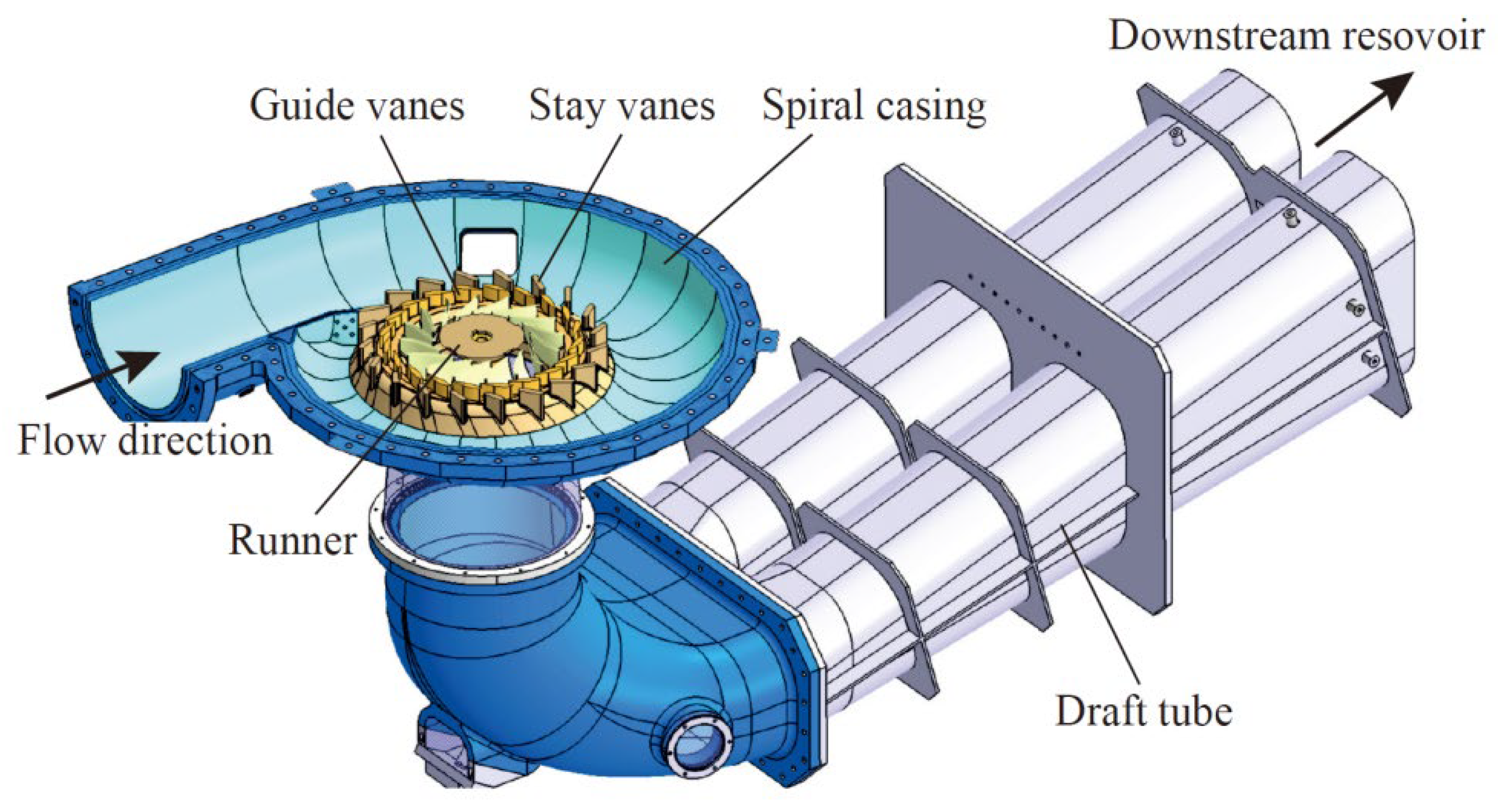


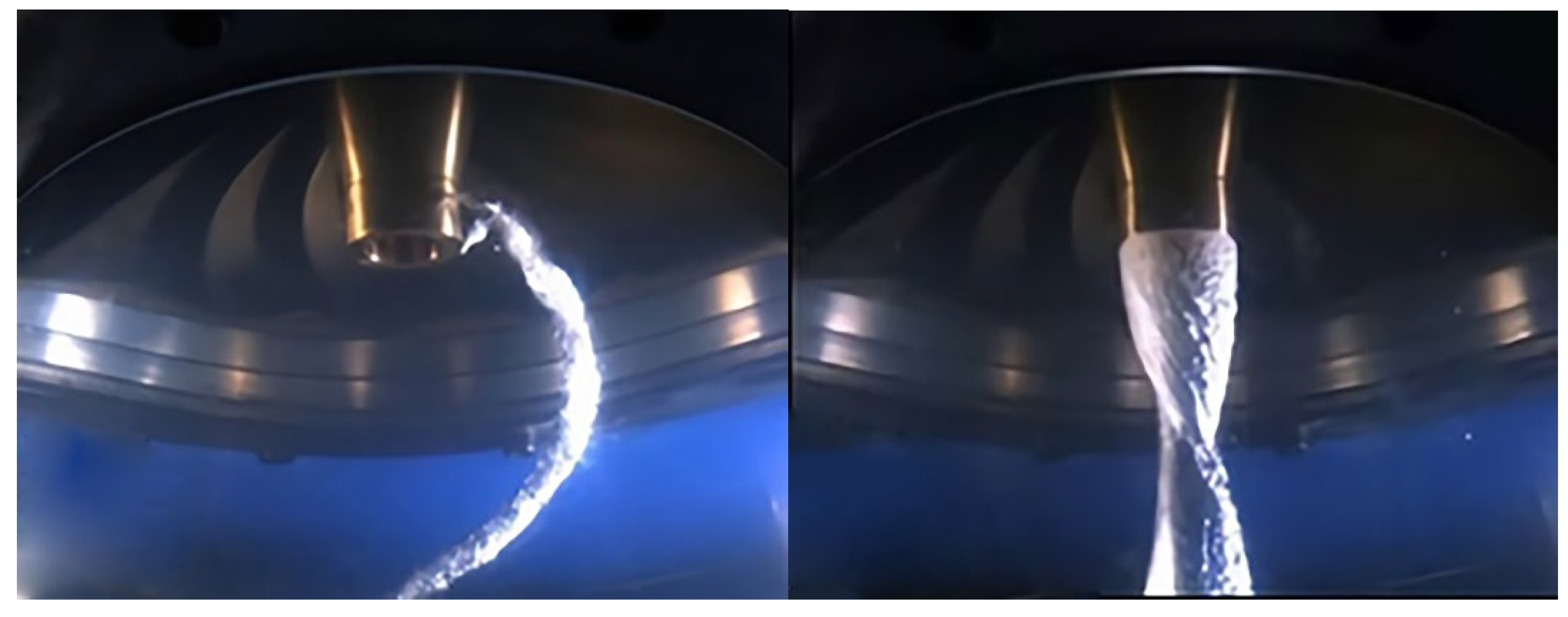


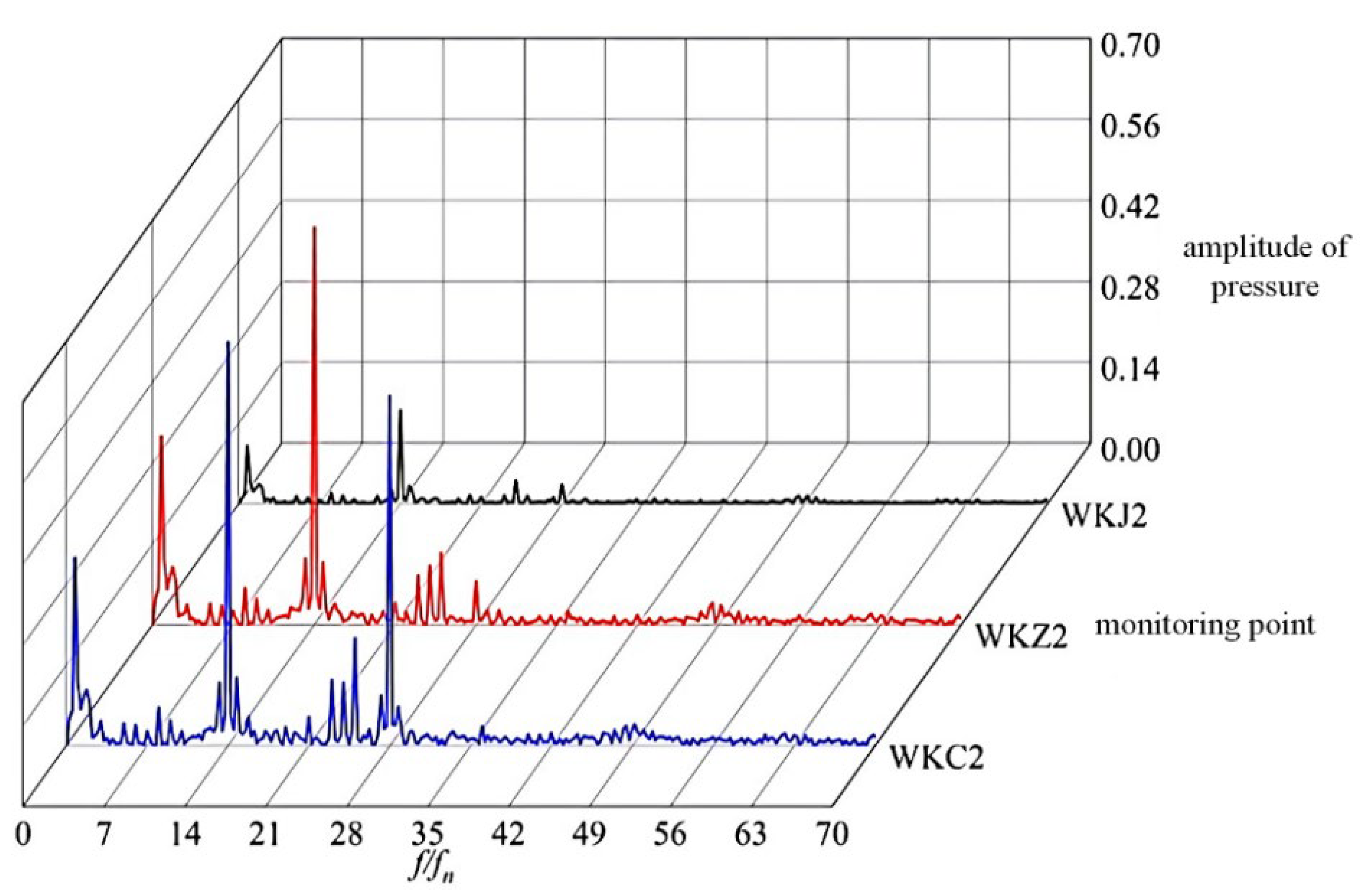
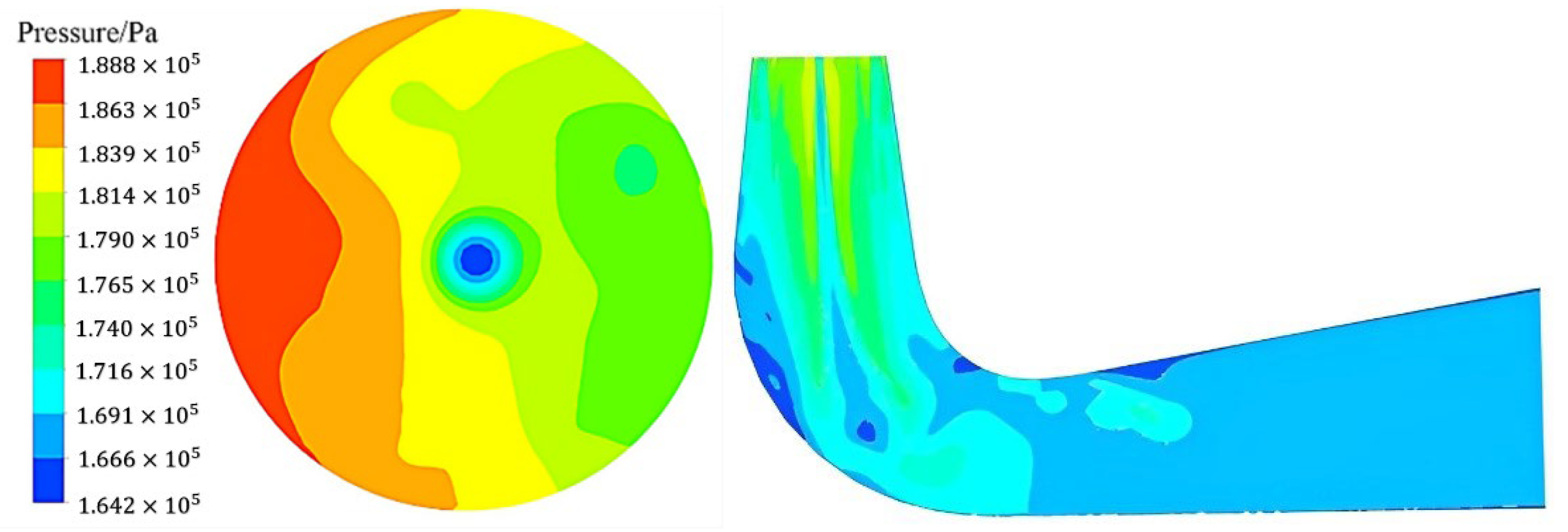

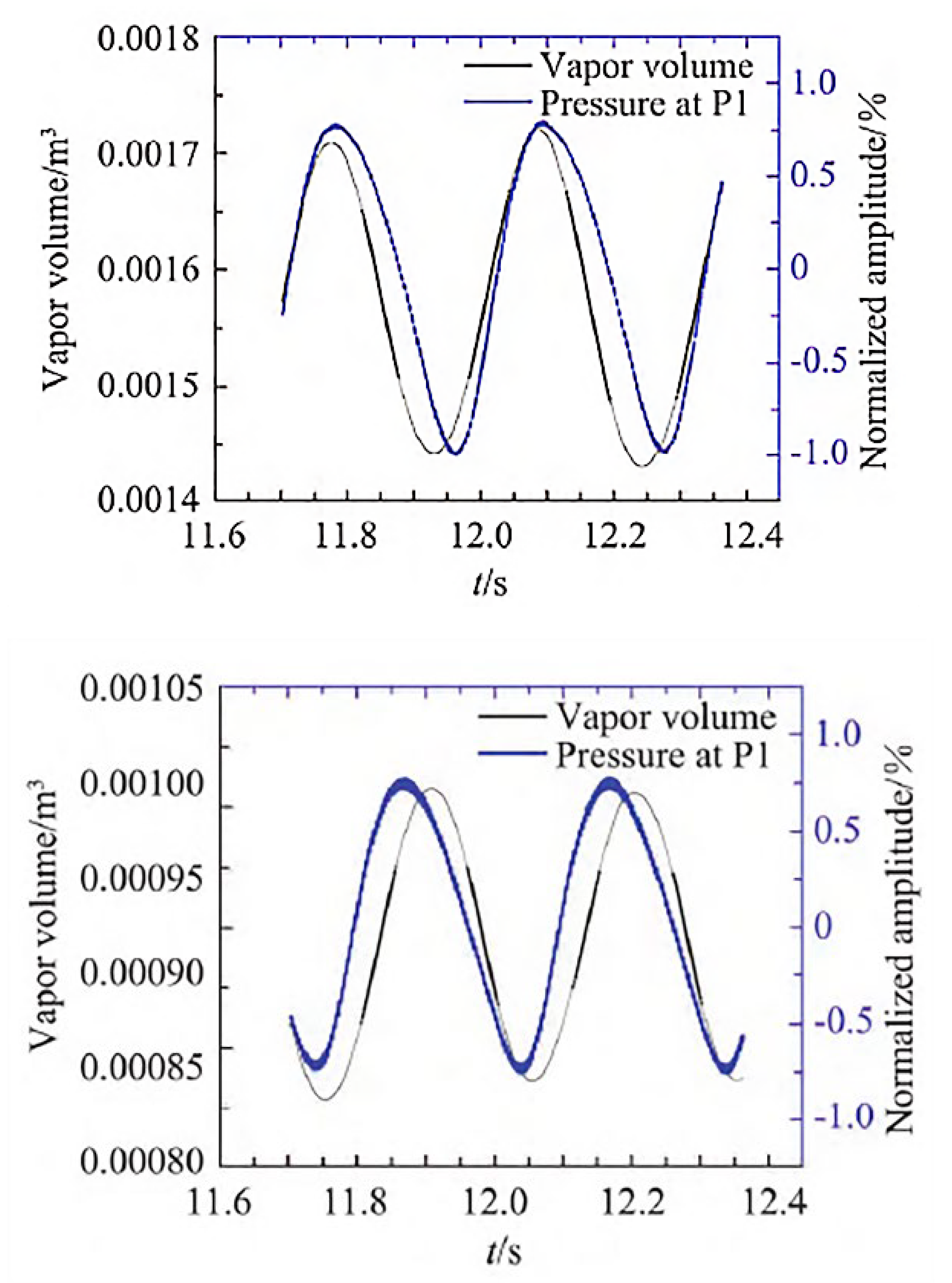


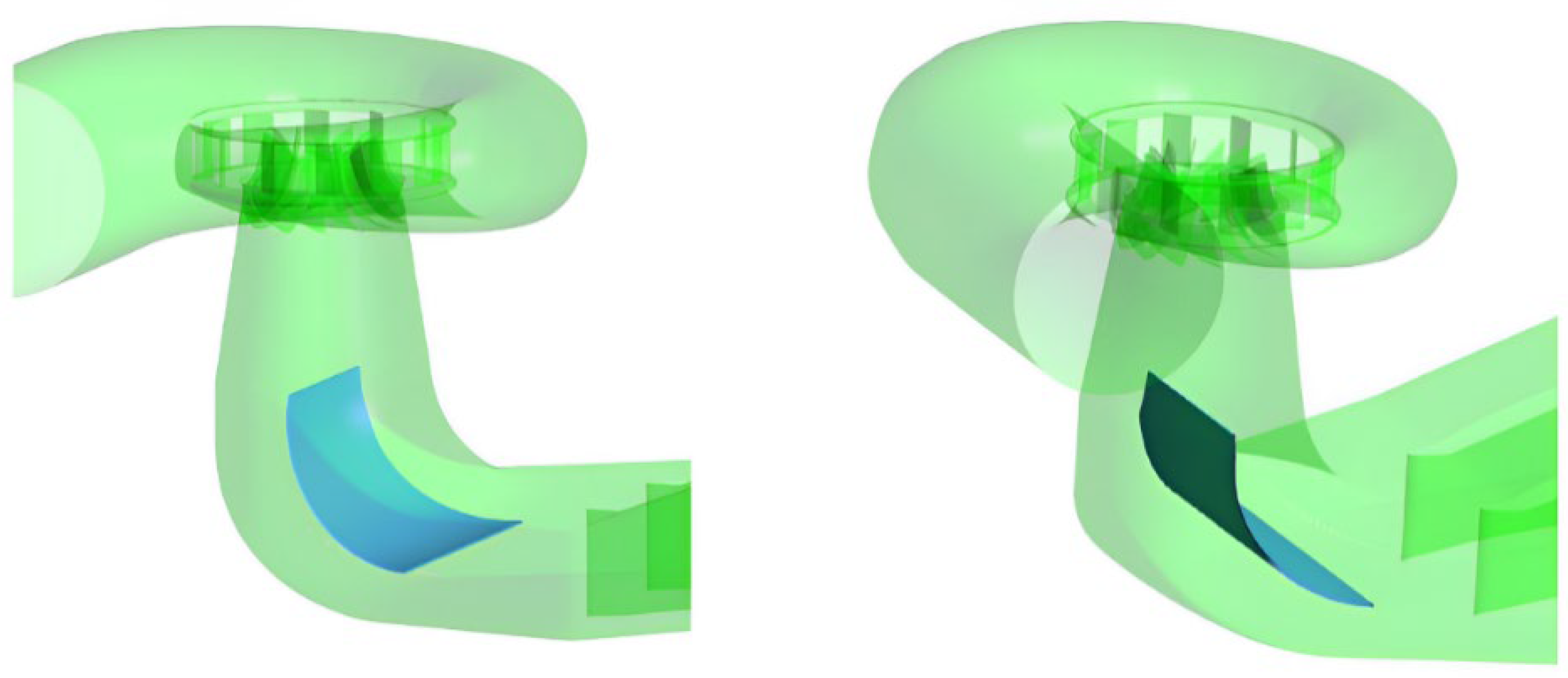
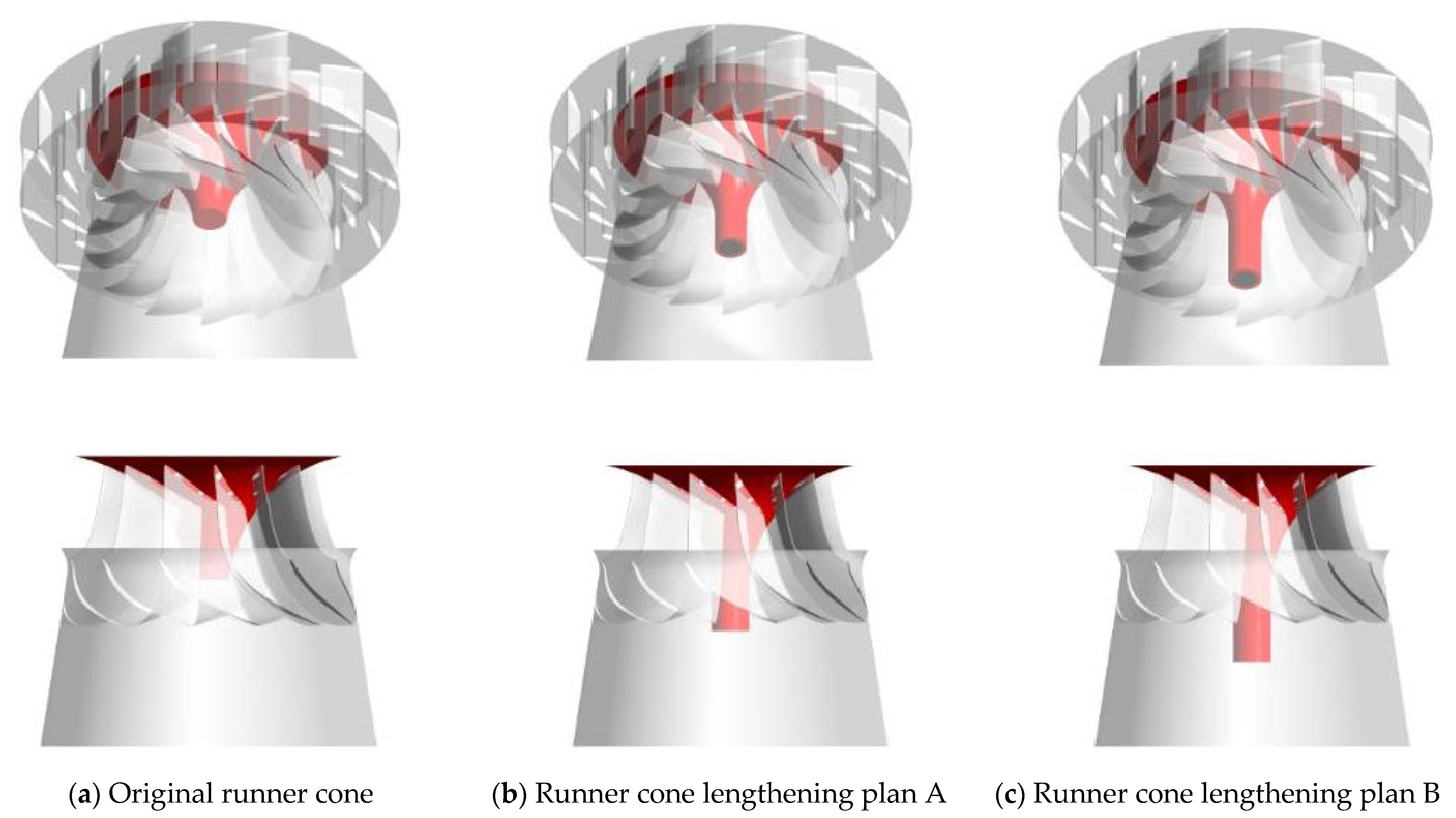



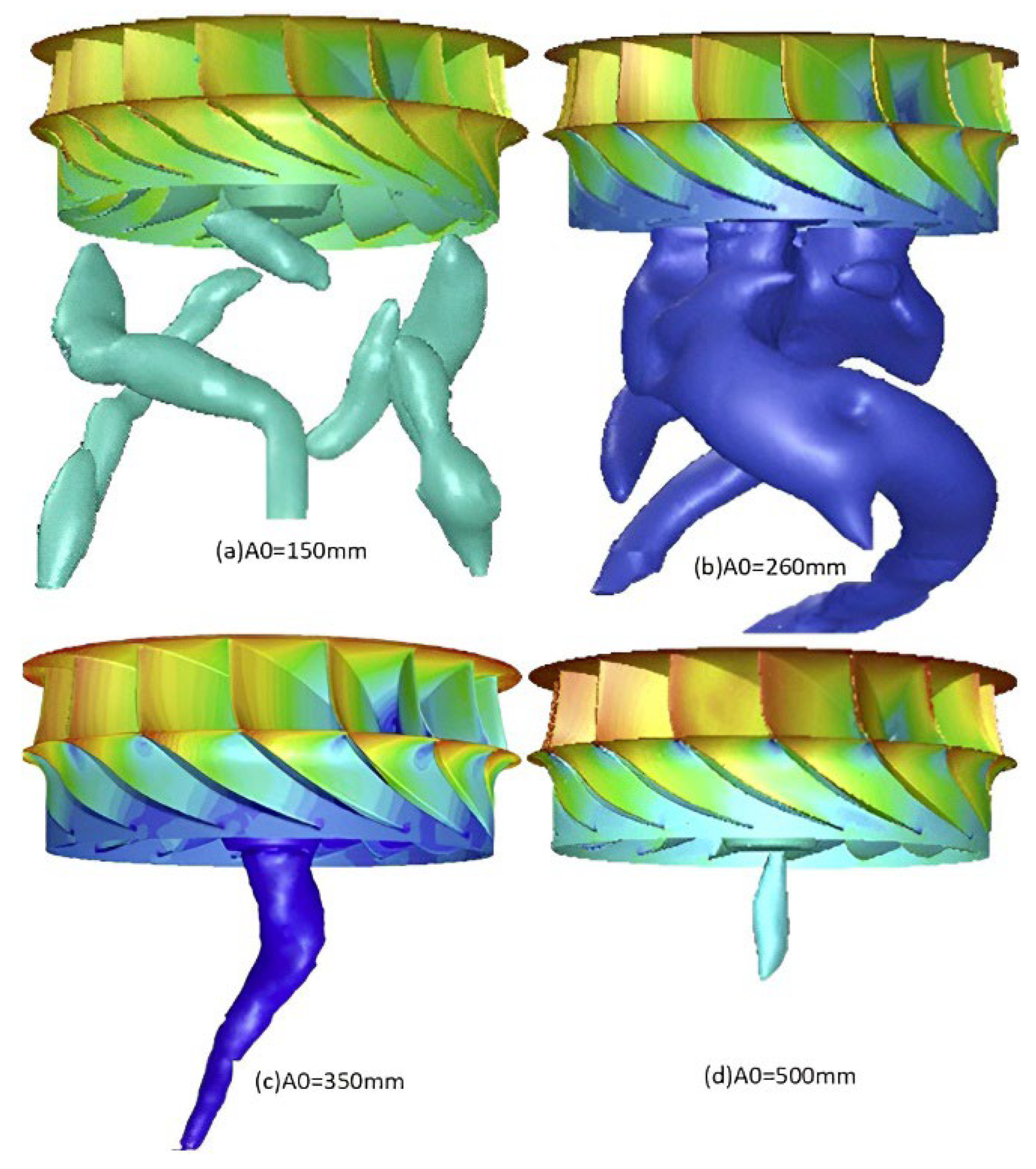


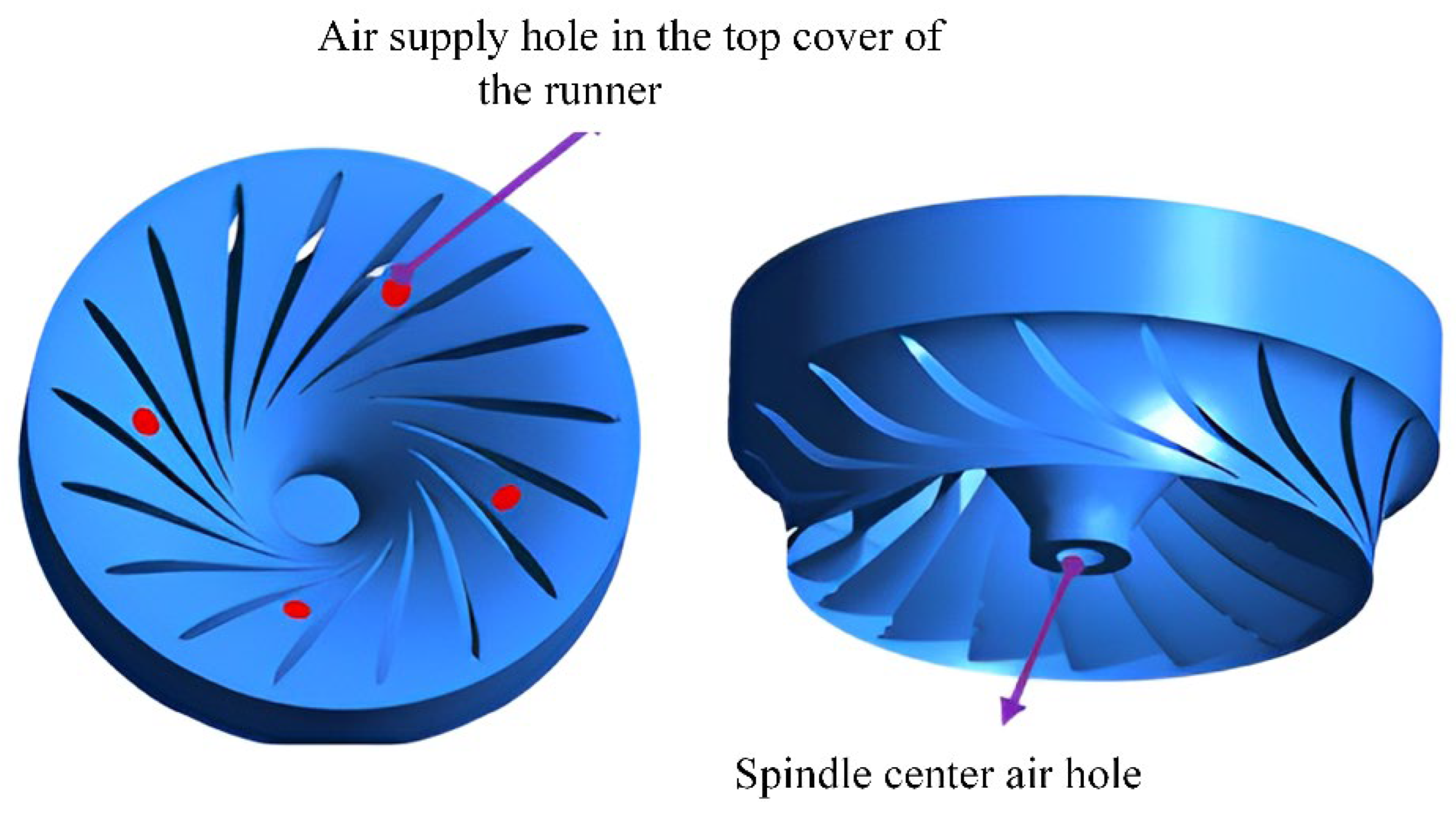
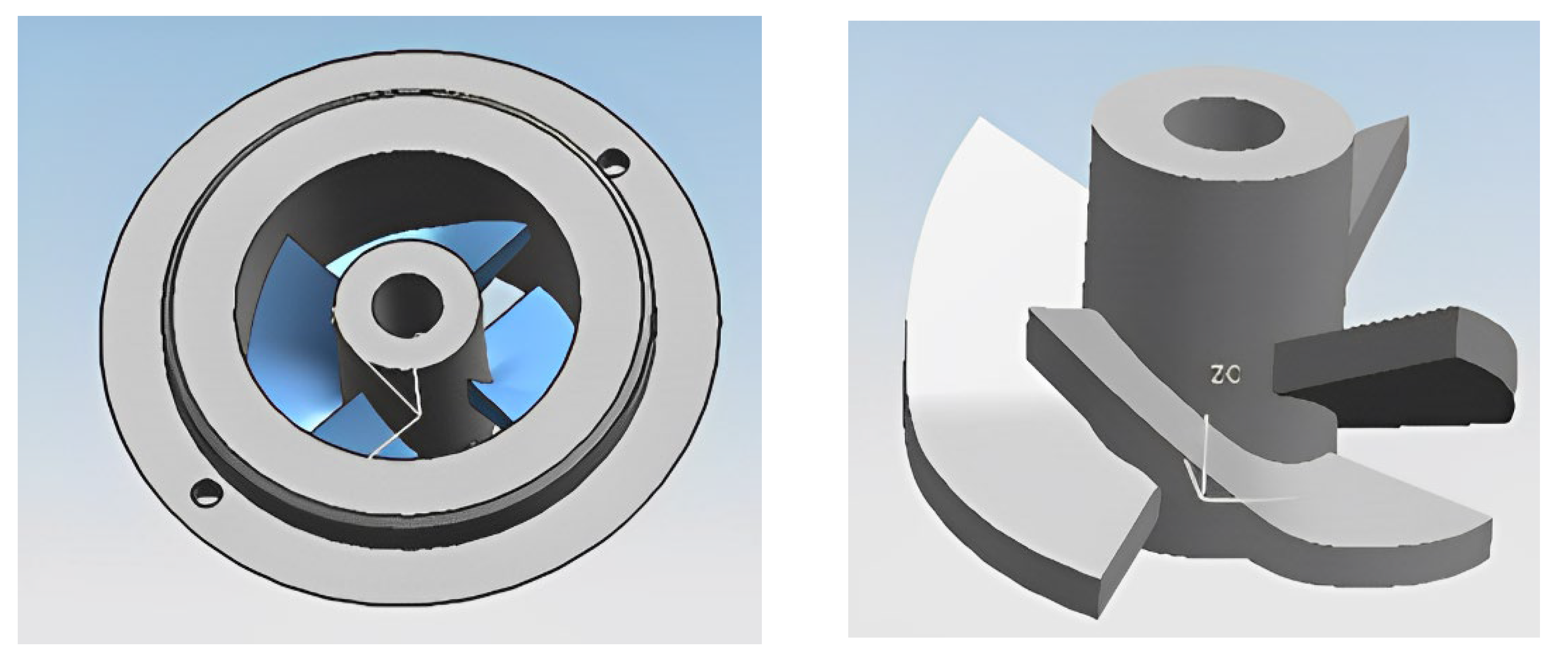
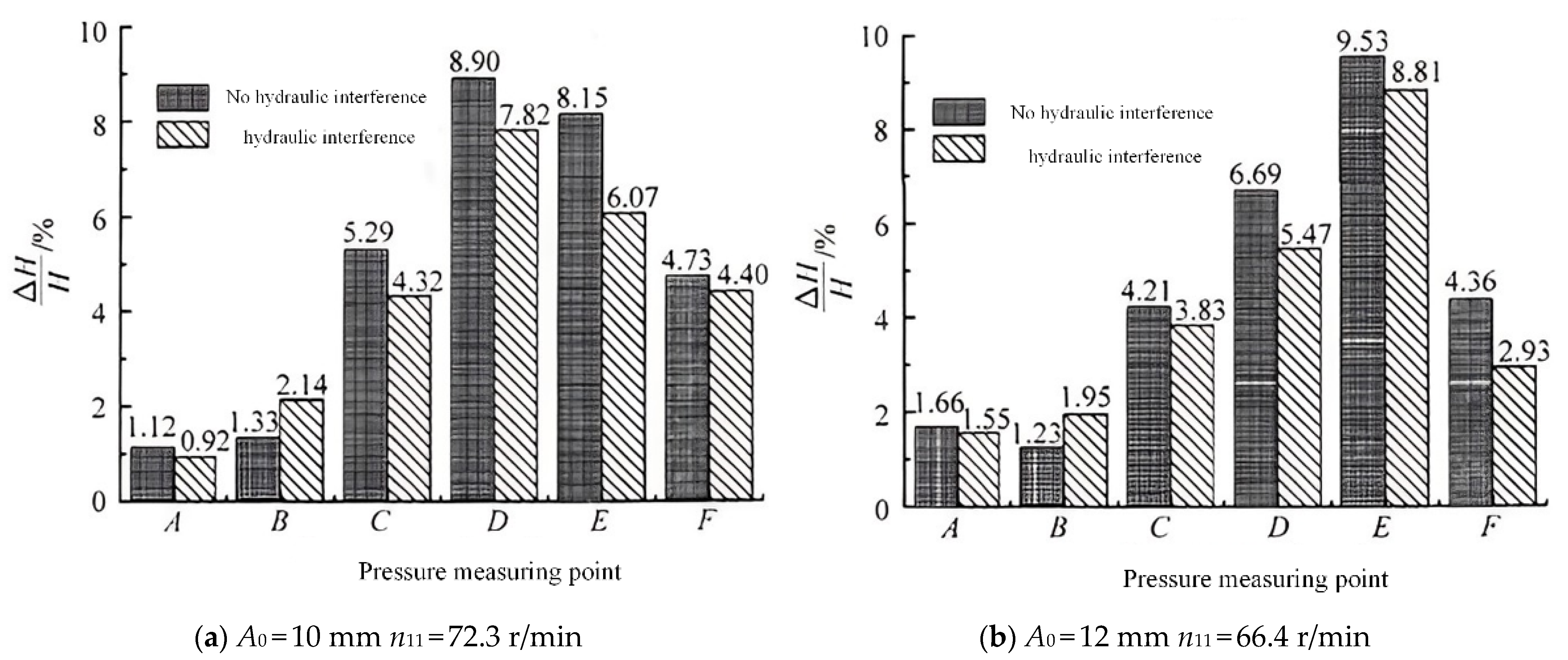

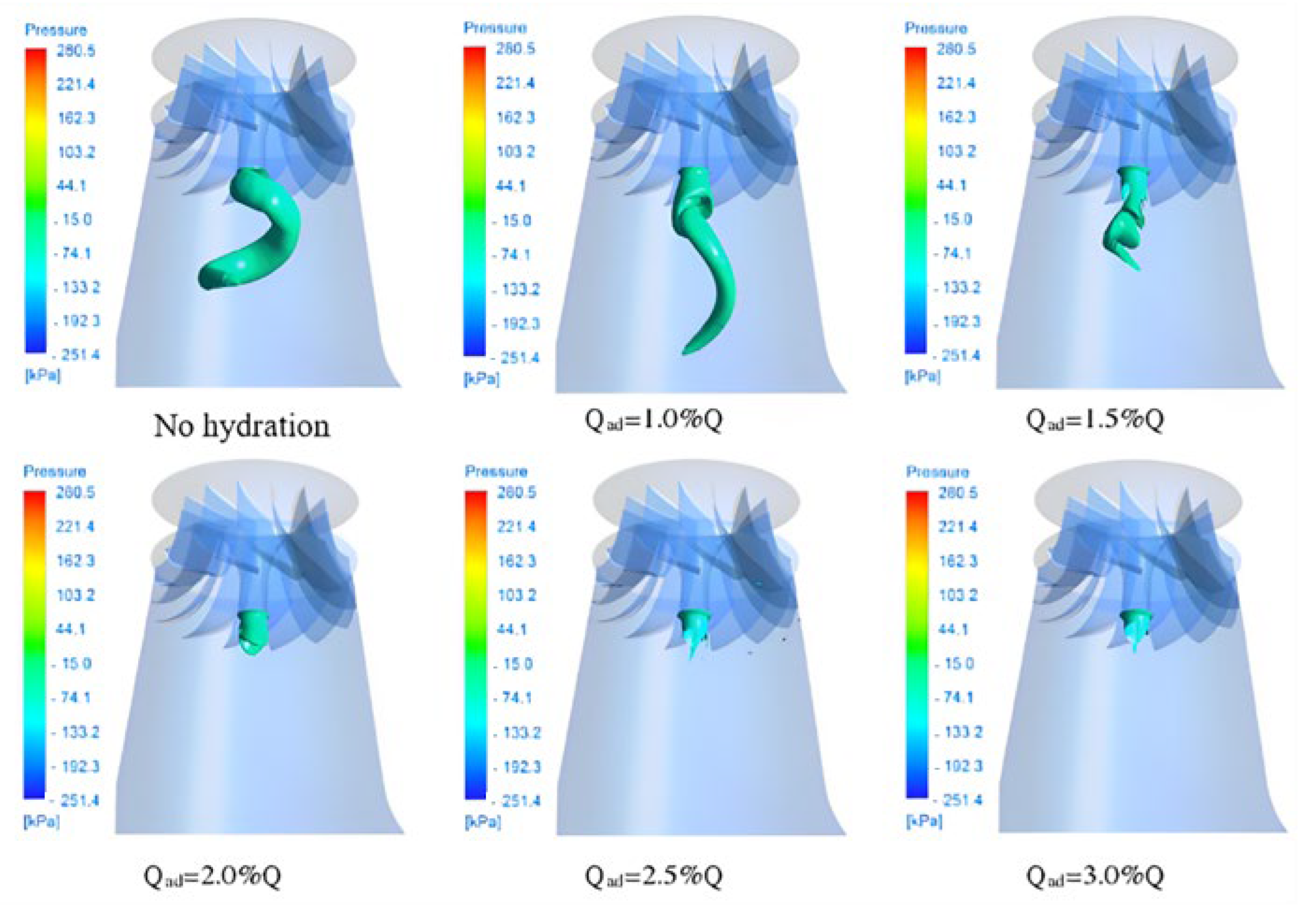
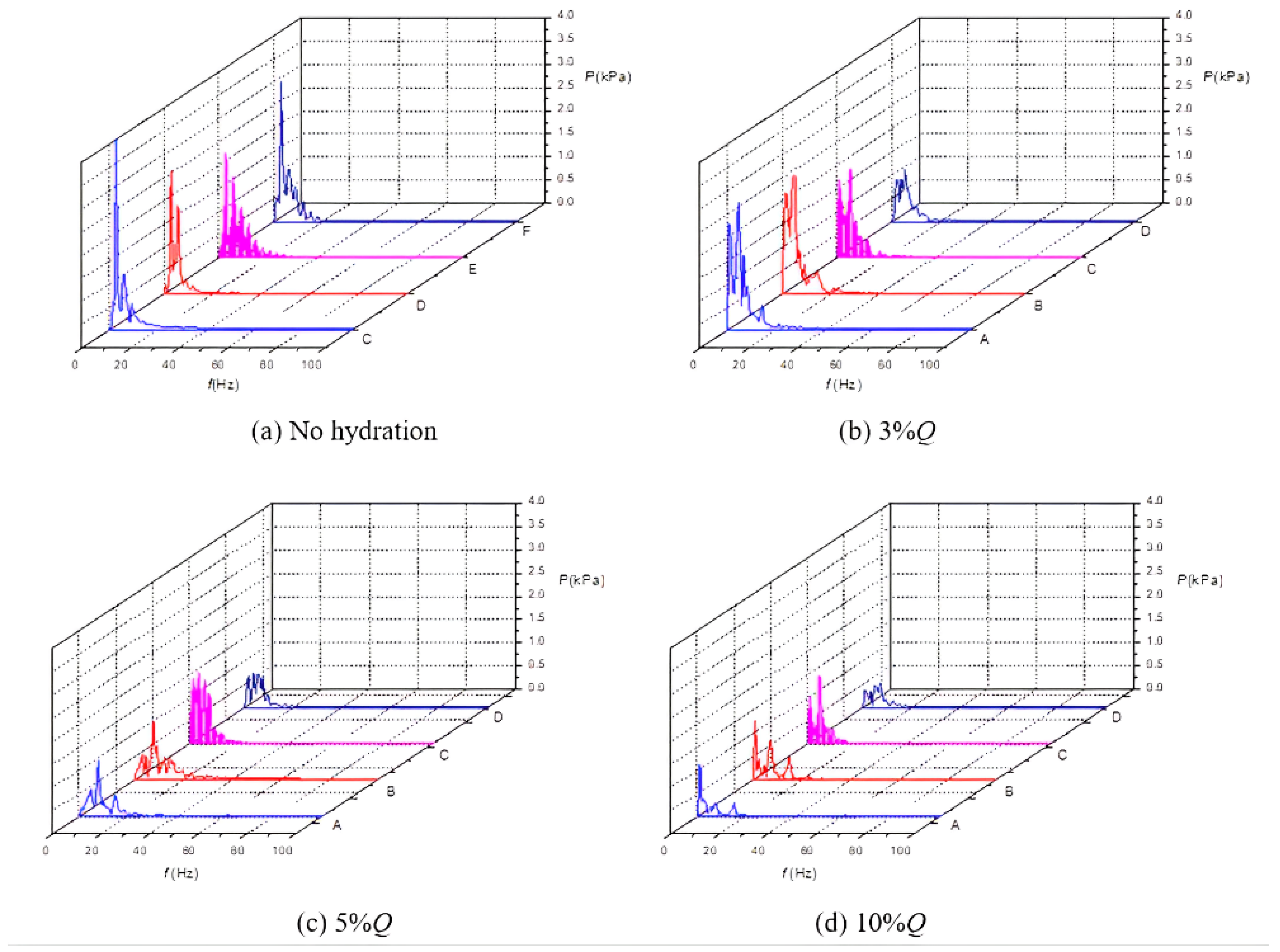
| Method | Classification | Advantages | Disadvantages |
|---|---|---|---|
| Passive Flow Control | Structure Optimization of Draft Tube | Stabilize the flow in the draft tube and reduce the pressure velocity and cavitation volume of the flow field [44]. | Little improvement in vortex stability in draft tube [45] |
| Structure Optimization of Draft Tube | Increase runner efficiency and effectively reduce pressure pulsation amplitude [46]. | The increase in the eccentricity of the vortex rope under partial negative load [47]. | |
| Guide Vane Opening | Control low pressure area in draft tube and movement of vortex rope to reduce hydraulic loss [48]. | Cavitation vortex generation, severe cavitation erosion over long periods [49]. | |
| Active Flow Control | Replenish Air | Effectively suppress high frequency noise and pressure pulsation [50,51,52]. | Only to reach a certain value, to achieve better results [53]. |
| Supplemental Water | Effectively improve the draft tube vortex shape, reduce the pressure pulse assignment [54]. | Causes the amount of water jest to increase and the turbine efficiency to decrease monotonously [53]. |
Publisher’s Note: MDPI stays neutral with regard to jurisdictional claims in published maps and institutional affiliations. |
© 2022 by the authors. Licensee MDPI, Basel, Switzerland. This article is an open access article distributed under the terms and conditions of the Creative Commons Attribution (CC BY) license (https://creativecommons.org/licenses/by/4.0/).
Share and Cite
Wang, L.; Cui, J.; Shu, L.; Jiang, D.; Xiang, C.; Li, L.; Zhou, P. Research on the Vortex Rope Control Techniques in Draft Tube of Francis Turbines. Energies 2022, 15, 9280. https://doi.org/10.3390/en15249280
Wang L, Cui J, Shu L, Jiang D, Xiang C, Li L, Zhou P. Research on the Vortex Rope Control Techniques in Draft Tube of Francis Turbines. Energies. 2022; 15(24):9280. https://doi.org/10.3390/en15249280
Chicago/Turabian StyleWang, Lei, Jiayi Cui, Lingfeng Shu, Denghui Jiang, Chun Xiang, Linwei Li, and Peijian Zhou. 2022. "Research on the Vortex Rope Control Techniques in Draft Tube of Francis Turbines" Energies 15, no. 24: 9280. https://doi.org/10.3390/en15249280





